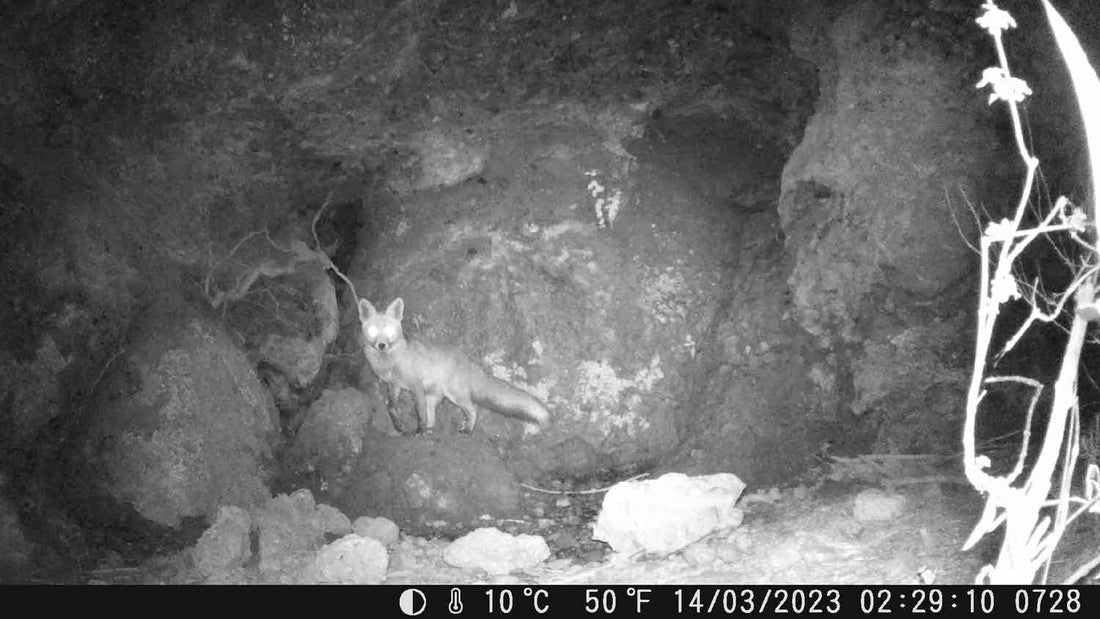
Discovering the territory and its wildlife through photo-trapping
Share
ATALAYA BIO is a sustainable agriculture project, born and raised in the emblematic Chuecos farm, a truly environmental gem in southeastern Spain, framed within the Natura 2000 network, just a few kilometers away from the Mediterranean coast. Several activities committed to the environment and biodiversity are carried out here, from the organic and biodynamic cultivation of ATALAYA BIO's aloe vera, to bird ringing and other periodic censuses of protected and vulnerable species, such as the Greek Tortoise.
The University of Murcia (UMU) coordinates numerous initiatives aimed at studying and understanding the territory on such an special farm, working with technological resources such as photo-trapping. Photo-trapping is a non-invasive technique for wildlife observation, which helps us understand how species behave without the human presence, through the study of images obtained from specific cameras placed strategically in the ecosystems.
George Shiras was a pioneer in wildlife photography at the end of the 19th century, with the arrival of the first automatic cameras, although the purest scientific use of "trap cameras" was established by Frank M. Chapman in the 1920s. Since then, technology has advanced a lot, and currently it is possible to use cameras with motion sensors and night vision, which facilitate the chance of registering high-quality images of the most difficult specimens for the naked eye.
Recently, just a few meters away from our biodynamic aloe vera plantation, cute carnivores such as foxes and badgers, ungulates such as the wild boar, rodents such as the red squirrel, reptiles such us the Greek Tortoise... and very rare hiding species, like the European Wildcat, have been observed. Indeed, a great biodiversity finds its refuge in our farm, where the respect for nature and the use of sustainable agricultural practices are a must.
Here's a short video with some of these photo-trapping images:
Courtesy of the University of Murcia (UAM). This work of studying and understanding the territory would not be possible without them.
The European Wildcat (Felis Silvestris Silvestris) is a small, carnivorous, wild feline, the ancestor of domestic cats. Saving the distances, it is an equivalent relationship to that of the wolf with domestic dogs, let's say. The wildcat lives between 6-12 years in the wild, and has been included in Annex II of the CITIES Convention for several years, since its population has drastically reduced over the last century, currently being limited to wooded areas. Although its European population is in regression, the IUCN cites it on its red list as threatened, so it is always a great joy to see it on our estate, where human activity always respects biodiversity and its wildlife.
Until recently, we could only study some of the most elusive wild species through their tracks (footprints, feces, hair...), or from the long distance (radio-tracking). Undoubtedly, we will continue to experience new advances in this field, and at ATALAYA BIO we will continue cultivating your aloe vera faithful to our origins: environmental respect and commitment to quality.
